Transcript of What Brands Need to Think, Do, and Say to Stand Out written by John Jantsch read more at Duct Tape Marketing
Back to Podcast
Transcript
 John Jantsch: This episode of the Duct Tape Marketing Podcast is brought to you by SEMrush. It is our go-to SEO tool for doing audits, for tracking position and ranking, for really getting ideas on how to get more organic traffic for our clients, competitive intelligence, backlinks and things like that, all the important SEO tools that you need for paid traffic, social media, PR and of course SEO. Check it out at semrush.com/partner/ducttapemarketing. And we’ll have that in the show notes.
John Jantsch: This episode of the Duct Tape Marketing Podcast is brought to you by SEMrush. It is our go-to SEO tool for doing audits, for tracking position and ranking, for really getting ideas on how to get more organic traffic for our clients, competitive intelligence, backlinks and things like that, all the important SEO tools that you need for paid traffic, social media, PR and of course SEO. Check it out at semrush.com/partner/ducttapemarketing. And we’ll have that in the show notes.
John Jantsch: Hello and welcome to another episode of the Duct Tape Marketing podcast. This is John Jantsch and my guest today is Ron Tite. He is the Founder and CEO of an agency called Church+State. He’s also the host and the executive producer of a very short-run podcast called The Coup and the author of Think Do and Say, a book we’re going to talk about today, how to seize attention and build trust in a busy, busy world. So welcome Ron.
Ron Tite: John, thank you for having me.
John Jantsch: So we’re recording this in mid November, depending upon when people listen to this. This may or may not make sense, but I think that I’m going to close my office on Black Friday. Are you with me?
Ron Tite: Yes, I think you should.
John Jantsch: So, you tell a story about, and I’m a huge fan of this, of REI and I’m a huge fan of what they did with this. And so why don’t you, because I think that, well, you gave this story so much space very early in the book. So I’m going to at least assume that, to you, it sort of frames kind of the entire book in a lot of ways or at least the point of the entire book. So, you want to kind of unpack the REI Black Friday story and kind of contextualize it for Think Do Say?
Ron Tite: Yeah, it is such a great example of the model and it’s a great example of the model delivered in that first launch spot in 30 seconds where you get to know everything about the organization within 30 seconds. And so the model of Think Do Say is that the ‘think’ side is that… Well, sorry, I’ll back up. Given the world that we’re living in, people don’t know who to trust. They don’t know where to look and they don’t know who to trust. So with that, and that’s at all levels of the organization, that’s consumers, that’s B2B clients, they don’t know where to look, they don’t know who to trust. So how do you respond to that and how do you bubble up to the surface where you can win attention, sees attention and build trust along the way for having a business with longevity?
Ron Tite: Well, I thought REI did such a great job of that in that on the ‘think’ side, what do they think? Well, they believe in something that goes beyond what they sell. Because what they sell is outdoor equipment, hiking boots and tents and stuff like that. And other people sell that stuff. It’s not like they can claim to have the best sleeping bags, the best hiking boots. Other people sell that stuff. So they have to believe in something that goes beyond that. And the original CEO of this initiative says this line, “We believe that a life lived outside is a life well lived.” So they believe in something that goes beyond what they sell. Secondly, he doesn’t just believe it, but he actually acts with intent. He takes decisions that reinforces that belief specifically.
Ron Tite: So one of the things that REI did was they closed their store and all eCommerce channels on Black Friday. So we believe this, this is how we behave to support that belief. And then the third part is if we believe in something more important and we behave in a way that reinforces that belief, that’s not only worth talking about, it’s something that people want to hear about. But so if we are going to talk about it, then we should talk about it in a really authentic way. And they do that. They talk about it in their own unique voice. And so that initiative of #optoutside started in 2015 but it still exists today. They will be closing this Black Friday. And it has grown. They’ve increased other partners. But I think it’s such a great illustration of this is what we believe, this is what we do to reinforce the belief and this is how we talk about it.
John Jantsch: And I think it’s even maybe a little deeper, because it’s what their clients believe. It’s what their customers believe too. I think.
Ron Tite: Yes. And what’s really interesting about that is that, I mean, we can say it’s their customers. I think what’s important about it, it’s who conceivably would be their customers. Because if you just say what you believe, what your customers believe, then well, that’s a little opportunistic, right? That you’re aligning your beliefs with the people who give you money opposed to saying we’re going to align with people who share our values and our belief. We know that enough of those people will convert to being customers. And those that don’t, that’s totally cool because that’s not where our alignment is. But I think there has to be a confidence that when you align on values and beliefs, enough of those people will convert to being customers and clients.
John Jantsch: Over the last couple of years, and I know you do a lot of work in retail, but over the last couple of years, REI is really transitioning their business. they still sell the clothes and the tents, but they seem to be moving just kind of headlong into travel and experiences. And would you see that, and maybe you’re not aware of that, but would you see that as a transition of retail for them or do you see that as an expansion of where they think the world’s going?
Ron Tite: I think that what it is, is it gives them the opportunity to diversify their portfolio in a way that still reinforces their brand belief. So if you’re General Motors and all you do is sell cars and your brand belief is that you should make the best car in the world, that’s amazing when people are buying cars. But with ride sharing and autonomous vehicles, well, now what do you do? Your product-focused brand belief is useless and doesn’t protect you from the dynamic forces of the economy or from cultural interests.
Ron Tite: So when REI were saying, “We believe in a life lived outside is a life well lived,” that immediately set themselves up to broaden their horizons, diversify their portfolio because the new services of travel and they’re also doing classes of teaching people how to canoe, that still reinforces their belief. So yeah, I think, I mean in culture a great example is Lady Gaga who doesn’t believe in being the best singer in the world. Because if she did, she’d never be an actress. But she believes that people should be free to express themselves. And she lives that through acting, through music, through choreography, through visual arts, and now through a fashion line.
John Jantsch: So one of the threads that runs through your book, and quite frankly a lot of books over the last couple of years, is this idea of, tell people what you believe. Do we have to state what we believe in order to connect today? I mean, is that just we just have to get over it and do it?
Ron Tite: No, I think that what’s getting confusing is that brands and leaders representing those brands are thinking that we have to align corporate purpose with social issue. And that’s just wrong. Now in some cases-
John Jantsch: That sort of leads people to doing stuff that sounds good, doesn’t it?
Ron Tite: It really does. And they go, “Well, what is everybody talking about?” “Oh, they’re talking about the environment.” “Okay, yeah, yeah, we believe that too.” Which is fine if it’s strategically aligned with what you sell because what you sell is your do. So if you’re Nike and you say that everybody’s an athlete and your purpose is to support those athletes in their pursuits, you’re morally obligated to run that Colin Kaepernick ad. But if you’re Pepsi and you say that the world should come together in unity and you hire Kendall Jenner to be a spokesperson, you’d be like, “What does that have to do with pop? There’s nothing strategically aligned there.” If you’re Audi and you say that the world should… we should experience gender equality in the workforce, that’s not why you may need cars. I mean, come on. It’s not that those issues aren’t important.
Ron Tite: But I don’t think so. I think if you do a good enough job like REI to say, we believe in this thing, which is strategically aligned with what we sell but is elevated, then I don’t think you have to say that whether you’re a Trump supporter or not or whether you support Title IX, whatever, all those things, all those public policy things, which can be divisive. So no, I don’t think they have to.
John Jantsch: I was in New York recently and I was speaking at an event that was right in Times Square. I stayed in Times Square. I hate Times Square by the way. But you actually have a quite lengthy explanation of, or kind of using Times Square as sort of a metaphor for our times today in the marketing world. So you want to kind of unpack that.
Ron Tite: Yeah. I think I agree with you that if I’m in New York and I have to stay in Times Square, something has gone wrong, but I certainly have done it. There’s two sides to Times Square that I think represent the modern marketing landscape. The first side is up top and up top there’s nothing but promotion and it’s really expensive to be there. And it is filled with legacy brands who have big budgets, who can afford the billboards and the video boards and they’re really slick and they’re polished. Of course, they’re really slick and polished. They had to spend all that money to buy their space. Of course, they’re going to make it absolutely perfect.
Ron Tite: And so it’s filled with opportunity. 400,000 people walk through Times Square or drive through Times Square every single day. It’s really expensive and everybody wants to be there. But to the consumer, to the person that that entire ecosystem has been built for, they have no idea where to look. They have no clue where to look. Nothing catches their attention because everything is screaming. And so all those brands up top are paying a lot of money to just contribute to the noise. Now, that’s one on level.
Ron Tite: The second level is down street level. At street level, that’s a whole other type of entrepreneur. That entrepreneur, they don’t have the funds to live up top, but they can be more nimble, and they can be more authentic, and they can be more aggressive, and they can be more targeted, and they don’t have the baggage of those big legacy brands, but they also don’t have the credibility of those big legacy brands. And often they have new business models. You’re not exactly sure who’s making money, what, where, right?
John Jantsch: Yeah, those guys handing out like the tour pamphlets, I’m always leery of them.
Ron Tite: Yes. Yes, so you’ve got the pamphlet guys, you’ve got somebody else selling you a fake Gucci, you’ve got somebody telling you the end of the world is coming. You have someone selling street meat, you’ve got someone selling watches. And the street meat guy, that may be the best sausage or hot dog you’ve ever had in your life, but he’s stuck down on this entrepreneurial level with all these nimble folks where you’re not exactly sure who’s valid and who’s not.
Ron Tite: So up top you don’t know where to look, down below, you don’t know who to trust. And so in the middle of marketing is the sweet spot that can we bring with us and dial up legacy aspects of credibility, responsibility and history with the nimbleness and the authenticity that a customized and personalized delivery can bring us. That to me is the sweet spot where most brands and most leaders need to live.
John Jantsch: Okay. It sounds exhausting. We’ll get back to that. There is a term that you use throughout this book and you kind of said that you didn’t make it up and you weren’t sure who did. So I coined the term pitch slap just so you know.
Ron Tite: It was you!
John Jantsch: It was me. So what the heck is that?
Ron Tite: A pitch slap is any overt or subtle pitching of your product when the sole focus of a piece of communication or a series of communications is to actually pitch your product or your service. And often we can smell this coming. It’s the person who connects with you on LinkedIn who says, “Oh John, you’re such a brilliant person. I’ve been following you for years. I read all your books. It must be so enlightening to just breathe the same air as you.” And in your brain you’re going, “I know where this is going. You’re blowing smoke up my ass because you just want to pitch me your thing.” Right? And so opposed to, “Look, John, I’m going to connect with you and I’m going to add value over time until it gets to the point when you like what you hear and you ask me how you can hire me.” Those are two very different things.
Ron Tite: Now, I think a pitch slapping is the result of people gaming the system because the promise of digital communications was that we’d be able to put the right products and the right services in front of the right people at the right time by being able to produce communications never before, cheaper than we’ve ever been able to do it and distribute that in ways to people all over the globe. And what we’ve done or what a lot of people have done is they’ve tried to game the system by going, “Screw it! I’m not going to customize this. I’m just going to blast a million different people and I’m going to pitch slap everybody. And I don’t care about the innocent bystanders who are offended or who get frustrated or who hate me for doing it, because two people are going to convert and that’s fine for me.” And I think that’s the problem with modern marketing communications. This was supposed to be the promised land and instead it’s a wasteland.
John Jantsch: So, correct me if I’m wrong, but you do some standup don’t you or have?
Ron Tite: Well, yeah, I spent 20 years as a standup and then hosted a comedy show up until the point that my wife and I had our first child just close to two ago. But it’s weird. It’s speaking… There’s this diversion of standup when I do about 70 keynotes a year. So kind of.
John Jantsch: And obviously it comes through in your writing as well. In fact, I didn’t realize what a literary researcher that you were and you turned up some new quotes from Confucius and John Rockefeller that I really was not familiar with. So listeners, you’re going to have to get the book to enjoy those. But let me ask you to share, since we’re kind of picking on the people’s use of some of the digital tactics, you spent a lot of time talking about LinkedIn in general, so you want to go through some of the various characters that we might mean on LinkedIn.
Ron Tite: Oh, I would absolutely love to.
John Jantsch: Like the gopher for example.
Ron Tite: Yeah. Yeah. Well, there’s a… I’m going to call them up here because I want to make sure that I do them justice. So the groper. Yes. The groper is the person who right out of the gate, it’s like they’re all over you, right? They’re all over you with that invite to connect [crosstalk 00:16:03]-
John Jantsch: Yeah, I was going to say, I actually get some invitations that they don’t even wait for me to accept. It’s like in the invitation they’re pitching me.
Ron Tite: Yeah. Yeah. They’re saying like, “Are you available for call next day between 12:00 and 14:00?” And you’re like, what? I mean that is just so aggressive and I don’t know who is teaching this.
John Jantsch: My favorite or actually least favorite is the ones that always have in there somewhere, “I’d like to learn about your business.” I’m like, “If you don’t know everything about my business that has been on for 20 years online, then you’re not trying very hard.”
Ron Tite: Yeah. What I love about that is, what I call in the book the Howdy Partner, right? Which is the, “Not only do I want to know about your business, but let’s partner John. I mean I’m a real estate agent and I can send clients your way and you can send clients…” Like, “What? I don’t partner with well-established organizations because there’s not a fit. You think I’m going to partner with some random person. That’s ridiculous.”
John Jantsch: Unless there’s synergies.
Ron Tite: No, no. The other one that I think is really funny is what I call the Stumble Upon because I don’t know if you get this a lot, but it just seems like every third invite is people going, like, “I stumbled upon your profile and thought that we should connect. And like, “Really, you just stumbled upon my profile,” and it’s like, “I think I want to connect to people who are a little bit more targeted in their browsing. Go home and StumbleUpon you’re drunk or you’re supposed to be on [inaudible 00:17:36].”
John Jantsch: I used to love to StumbleUpon then. I don’t know if you remember that app.
Ron Tite: Yeah.
John Jantsch: It was in the early days of the internet. You’d basically say, “Show me your website.” But things have changed.
Ron Tite: You know what though, I think we’re in need of [inaudible 00:17:52]. Don’t you think StumbleUpon should make a return, but it should be StumbleUpon for TV shows, right? StumbleUpon, here’s a Netflix show that you never thought… We need that curated experience.
John Jantsch: Yeah. Well, that’s a good point. I actually got a pitch from somebody who’s creating an app for podcasts that that’s kind of the idea where they’re going to, based on your interests, curate a whole bunch of stuff and then just give you like one minute snips so that you can decide. I thought that was clever.
Ron Tite: I was chatting with our friend Jay Baer last week and we were discussing this thing of like, “Oh yeah, jeez and me, where do you go for stuff because there’s so many shows and so many good things?” And I said to Jay, “I think we need to start a magazine called TV Guide.” Like, we could just find out what the heck is on all the different streaming services.
John Jantsch: Yeah. It’s amazing, I’ll go out to dinner with somebody and they’ll say, “Oh yeah, we just started watching this show,” and it’s like, “I never even heard of it [crosstalk 00:18:57].” All right. So we got knocked off course here a little bit, but I really wanted to come back with the money question. What should we be doing that we’re not doing today?
Ron Tite: What we should be doing is I don’t think we’re putting enough emphasis on the foundations, especially on the two ends of the spectrum. So really, really large organizations where kind of the bureaucracy has come in and said like, “Let’s just check a box. Let’s just check a box and say that we did the thing and see if we can pursue those metrics even though it has no foundation to growing our business whatsoever.”
Ron Tite: The second thing is that, within entrepreneurial mindset, where people are like, “I want to get to the thing that allows me to beat my chest and say I’ve got the thing.” And often that means we’re chasing these vanity metrics and we need to play the long game. We just need to play the long game. And this is not rocket science. If we believe in something more important that allows us to diversify our portfolio and be nimble and pivot and all those things. And then we actually focus on what do we actually do to reinforce it. And that can be products, but that can also be based on who we do it for and what they want us to do. What problems can we solve for people and how do we acknowledge who we do it with?
Ron Tite: And then the third part, I’m like, “Look, let’s just talk about it in an authentic way. Let’s have real conversation with real people.” There’s nothing that’s brilliant about that. There really isn’t. But it takes a commitment and it takes focus on business foundations and slowly over time you will build the business. You will build your profile.
John Jantsch: It’s in the subtitle, but we haven’t really talked enough about it. I mean, I think the real game that we’re all involved in, maybe always have been, but it’s gotten harder and messier, is trust, isn’t it?
Ron Tite: It most certainly is. And as marketers, marketers have spent a lot of time, and I’m just as guilty by the way, of saying, “How do we cut through the noise? How do we cut through the noise? How do we get people’s attention?” It’s a goldfish universe above all those things and it’s like, look, if you just want to gain attention, kill a puppy. Just kill a puppy. You’ll get attention. People will talk about you. But if you want to grab attention and build trust so that that new business cost, that acquisition cost decreases over time, then that is about trust. And trust is based on actually delivering. And it’s actually delivering in a way that people in one way expect because it aligns with your beliefs and another way don’t expect because it goes well beyond what they’re used to getting from brands.
Ron Tite: And when you can do that, I think you know what, you’ll be good. You will continue to grow the business. If you’re a thought leader, you will continue to grow your influence. Now, are you going to get that massive spike in traffic? Maybe not, but incrementally you will continue to grow over time and where it should be the long game or in Simon Sinek’s new word, The Infinite Game, that we really should be focused on.
John Jantsch: Amen to that. So Ron, where can people find more about Think Do Say and some of the other work you’re doing there at Church+State?
Ron Tite: They can go to the Church+State website, churchstate.co. They can go to thinkdosay.com or rontite.com because I’m an equal opportunity URL giver.
John Jantsch: I’m assuming you’re in Toronto today?
Ron Tite: I’m in Toronto. I’m on my way to New Jersey and then to Procter & Gamble in Cincinnati and then Arizona. No, back to Toronto and then Arizona.
John Jantsch: But the book is available in both Canada and the United States. Isn’t that an amazing world we live in?
Ron Tite: It’s part of the North American Free Trade Agreement or whatever we’re calling it now.
John Jantsch: It’s certainly not that, I’m sure. Ron, great catching up with you. Hopefully we’ll run into you soon out there on the road.
Ron Tite: That was good, John. Thanks so much and thanks everybody for listening. Really appreciate it.
from Duct Tape Marketing https://ift.tt/35Fe1cA
via
IFTTT

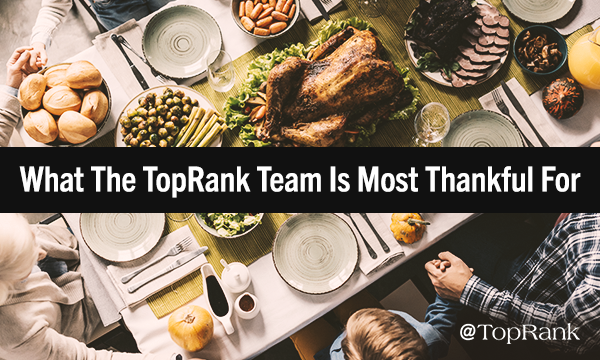
 Lee Odden
Lee Odden Annie Leuman
Annie Leuman Keith Widerski
Keith Widerski Josh Nite
Josh Nite Ashley Zeckman
Ashley Zeckman Birdie Zepeda
Birdie Zepeda Jack Fitzpatrick
Jack Fitzpatrick Tiffani Allen
Tiffani Allen Elizabeth Williams
Elizabeth Williams Debbie Friez
Debbie Friez Lane Ellis
Lane Ellis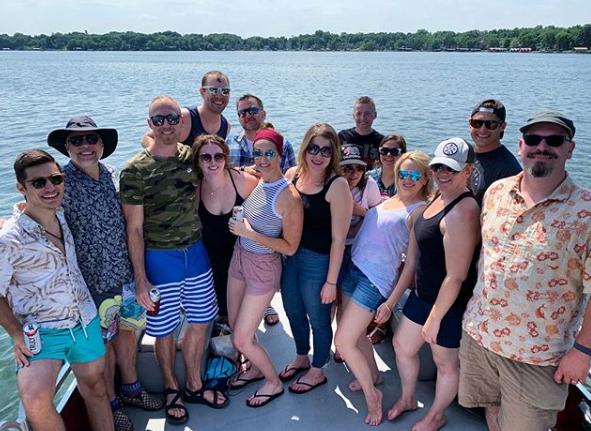


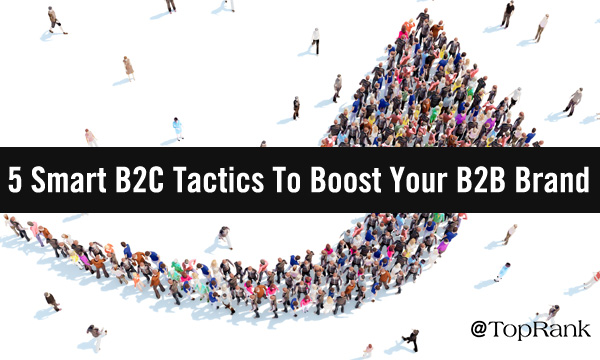
 Even though
Even though 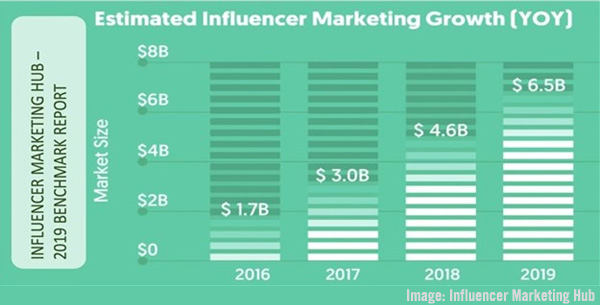 B2C influencer marketing has relied heavily on celebrity influencers, a combination that has faced a growing backlash and played a part in diminishing trust in marketing. B2B influencer marketing, on the other hand, incorporates industry experts who have a genuine two-way relationship with a brand, a partnership that respectfully serves both parties equally well, and boosts trust. While influencer marketing may have had its ups and downs in the B2C landscape, influencers in the B2B world may just be a perfect match. [bctt tweet="“Invite people to be in your program first and then do some brainstorming with them and see what they like, how they like to interact or what they like to do for companies.” @AmishaGandhi" username="toprank"]
B2C influencer marketing has relied heavily on celebrity influencers, a combination that has faced a growing backlash and played a part in diminishing trust in marketing. B2B influencer marketing, on the other hand, incorporates industry experts who have a genuine two-way relationship with a brand, a partnership that respectfully serves both parties equally well, and boosts trust. While influencer marketing may have had its ups and downs in the B2C landscape, influencers in the B2B world may just be a perfect match. [bctt tweet="“Invite people to be in your program first and then do some brainstorming with them and see what they like, how they like to interact or what they like to do for companies.” @AmishaGandhi" username="toprank"]  B2C brands have spent heavily on bringing consumers engaging interactive online content as a major part of many marketing campaigns. As the B2B landscape continues to speedily depart from its dusty Boring-To-Boring roots, business customers are expecting content and experiences that are increasingly similar to what B2C efforts have long provided, and engaging interactive experiences exemplify the type of content B2B firms need to offer if they wish to successfully compete. What could be less interactive or engaging than a hundred-plus page purely text industry white paper? Today’s B2B customers expect to have access to all of the relevant information that white paper contained, but brought to life through an online interface that’s not only easy to search and navigate, but also chock full of user experience features that make interacting an entertaining experience. [bctt tweet="“You may need to take baby steps with your audience to get them warmed up to the idea of interactivity.” — Caitlin Burgess @CaitlinMBurgess" username="toprank"]
B2C brands have spent heavily on bringing consumers engaging interactive online content as a major part of many marketing campaigns. As the B2B landscape continues to speedily depart from its dusty Boring-To-Boring roots, business customers are expecting content and experiences that are increasingly similar to what B2C efforts have long provided, and engaging interactive experiences exemplify the type of content B2B firms need to offer if they wish to successfully compete. What could be less interactive or engaging than a hundred-plus page purely text industry white paper? Today’s B2B customers expect to have access to all of the relevant information that white paper contained, but brought to life through an online interface that’s not only easy to search and navigate, but also chock full of user experience features that make interacting an entertaining experience. [bctt tweet="“You may need to take baby steps with your audience to get them warmed up to the idea of interactivity.” — Caitlin Burgess @CaitlinMBurgess" username="toprank"]  As B2B efforts become more like those in B2C, business marketers are increasingly looking for places to showcase their best work, and industry awards events can be a powerful way to share and celebrate cutting-edge work. Whether it’s physical red carpet award programs where industry professionals gather to honor the top B2B marketing work, or purely digital events that show off lists of winning campaigns, the benefits of highlighting great B2B marketing efforts can be far-reaching. LinkedIn* recently announced the winners of its "
As B2B efforts become more like those in B2C, business marketers are increasingly looking for places to showcase their best work, and industry awards events can be a powerful way to share and celebrate cutting-edge work. Whether it’s physical red carpet award programs where industry professionals gather to honor the top B2B marketing work, or purely digital events that show off lists of winning campaigns, the benefits of highlighting great B2B marketing efforts can be far-reaching. LinkedIn* recently announced the winners of its " B2C companies were some of the first to actively offer chatbots to consumers, however there’s been swift adoption in the B2B world, and with studies showing that people like interacting with powerful chatbots when they can quickly get the answers they seek, more B2B organizations are likely to begin using chatbot technology in 2020 and beyond.
B2C companies were some of the first to actively offer chatbots to consumers, however there’s been swift adoption in the B2B world, and with studies showing that people like interacting with powerful chatbots when they can quickly get the answers they seek, more B2B organizations are likely to begin using chatbot technology in 2020 and beyond. 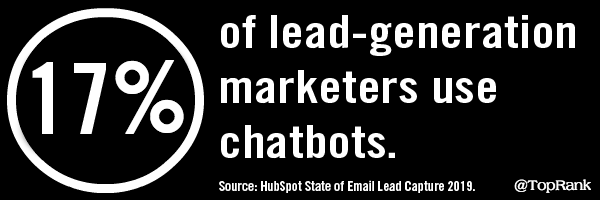 For a deeper look at how chatbots, artificial intelligence, plus augmented and virtual reality can work to your B2B marketing advantage, here are five recent articles we’ve published:
For a deeper look at how chatbots, artificial intelligence, plus augmented and virtual reality can work to your B2B marketing advantage, here are five recent articles we’ve published:
 Just a few years ago the idea of podcasting in a B2B context would likely have been seen as preposterous by most business consumers. Now however, as podcasting’s popularity has skyrocketed in general — over 62 percent of podcast listeners say they listen to more now than a year ago — more B2B firms than ever are either starting their own or studying how to do so in the near future. B2B podcasting is ripe for business marketers, with some 13 million households already including avid fans of business podcasts, and 52 million households including casual fans of business podcasts, according to Nielsen podcasting data. Our senior content marketing manager
Just a few years ago the idea of podcasting in a B2B context would likely have been seen as preposterous by most business consumers. Now however, as podcasting’s popularity has skyrocketed in general — over 62 percent of podcast listeners say they listen to more now than a year ago — more B2B firms than ever are either starting their own or studying how to do so in the near future. B2B podcasting is ripe for business marketers, with some 13 million households already including avid fans of business podcasts, and 52 million households including casual fans of business podcasts, according to Nielsen podcasting data. Our senior content marketing manager  Today on the Duct Tape Marketing Podcast, I chat with Dr. Sabrina Starling. She is the founder of
Today on the Duct Tape Marketing Podcast, I chat with Dr. Sabrina Starling. She is the founder of 